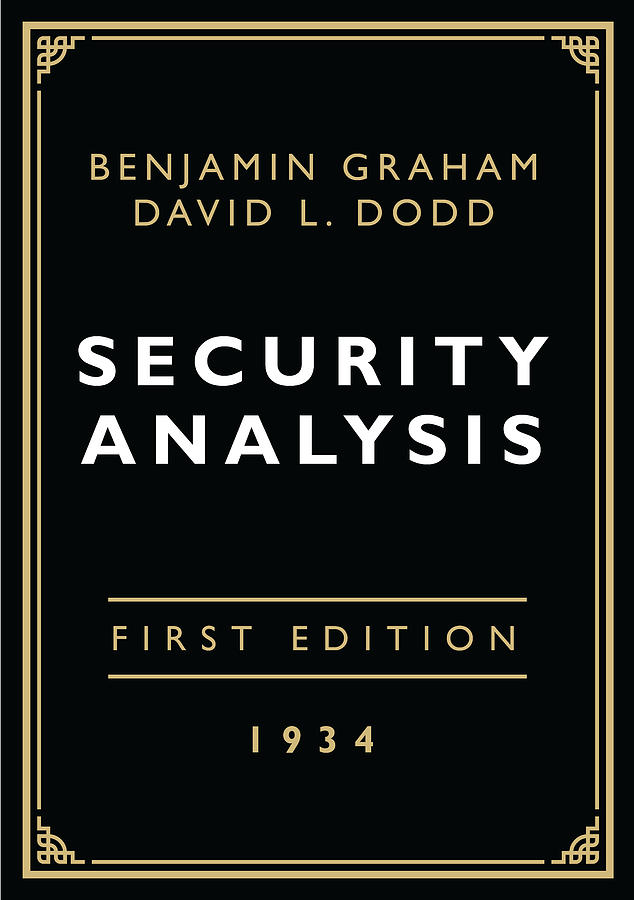Security Analysis: Book Review
Security Analysis” by Benjamin Graham and David Dodd is a seminal work in the field of finance and investing, first published in 1934. Often cited as the bible of value investing, the book lays down the fundamental principles of evaluating investments, particularly stocks and bonds. This review will explore the key themes, strengths, and potential limitations of “Security Analysis,” and why it remains a vital read for investors and financial professionals.
Introduction to “Security Analysis”
“Security Analysis” is renowned for its rigorous approach to analyzing securities, emphasizing the intrinsic value of investments as distinct from their market price. The book was groundbreaking at its time of publication, introducing concepts that challenged the then-prevalent speculative approach to the stock market. Graham and Dodd’s methodology focuses on a thorough analysis of a company’s financial statements, management quality, and long-term prospects.
Core Principles and Themes
The core thesis of “Security Analysis” revolves around the concept of value investing. This involves buying securities that appear underpriced by some form of fundamental analysis. Key principles include:
- The Margin of Safety: This is perhaps the most famous concept from the book. Graham and Dodd advocate for investing with a margin of safety, meaning that one should buy securities at prices sufficiently below their intrinsic value to allow for error in the estimation process.
- Fundamental Analysis: The book emphasizes analyzing a company’s actual financial statements, understanding its business, and evaluating its management and competitive advantages.
- Market vs. Intrinsic Value: The authors differentiate between a company’s market price and its intrinsic value, urging investors to focus on the latter.
- Risk Management: “Security Analysis” discusses risk as primarily the danger of losing principal and earning an inadequate return. The authors argue that risk can be mitigated through diversification and the margin of safety.
Strengths of the Book
- Timelessness of Concepts: Despite being published almost 90 years ago, the fundamental principles outlined in “Security Analysis” remain relevant. The focus on intrinsic value, thorough analysis, and risk management are as pertinent today as they were in the 1930s.
- Depth of Analysis: Graham and Dodd provide a comprehensive framework for evaluating different types of securities, including stocks, bonds, and preferred stocks. Their approach is rigorous and detailed.
- Educational Value: For students of finance and investing, “Security Analysis” is an educational goldmine. It offers a deep dive into financial statement analysis and valuation techniques.
- Influence on Investing: The book’s impact on the field of investing is profound. It has shaped the investment philosophy of countless successful investors, including Warren Buffett.
Limitations and Criticisms
- Complexity and Density: “Security Analysis” is not an easy read. Its depth and complexity can be daunting for beginners. The detailed analysis and old-fashioned language might be challenging for some readers.
- Contextual Changes: The financial world has evolved significantly since the 1930s. Some examples and specific advice in the book may not be directly applicable in today’s context, given changes in accounting standards, financial instruments, and market dynamics.
- Focus on Quantitative Analysis: While the book excels in quantitative analysis, it offers less on the qualitative aspects of investing, such as evaluating management quality or industry trends.
- Perceived Conservatism: Some modern investors might find Graham and Dodd’s approach overly conservative, particularly in a market environment often driven by growth investing and speculation.
The Legacy of “Security Analysis”
“Security Analysis” is not just a book about investing; it’s a historical document that captures a pivotal era in the financial world. The principles laid out by Graham and Dodd have transcended time and market cycles, solidifying their place in the canon of financial literature.
The book’s influence extends beyond its pages, as its principles have been adapted and expanded upon by generations of investors. Warren Buffett, perhaps the most famous disciple of Graham, has often cited “Security Analysis” as a major influence on his investment philosophy.
Conclusion
In summary, “Security Analysis” is a cornerstone of investment literature. It is indispensable for anyone serious about understanding value investing and the fundamental analysis of securities. While its complexity and the dated nature of some examples might pose challenges, the book’s core principles offer invaluable insights into the art of investing.
For those willing to delve into its dense pages, “Security Analysis” offers a comprehensive education in the evaluation of securities, an understanding of the philosophy of value investing, and a historical perspective on the financial markets. Its relevance and influence in the world of finance and investing remain as strong today as they were nearly a century ago.














Post Comment